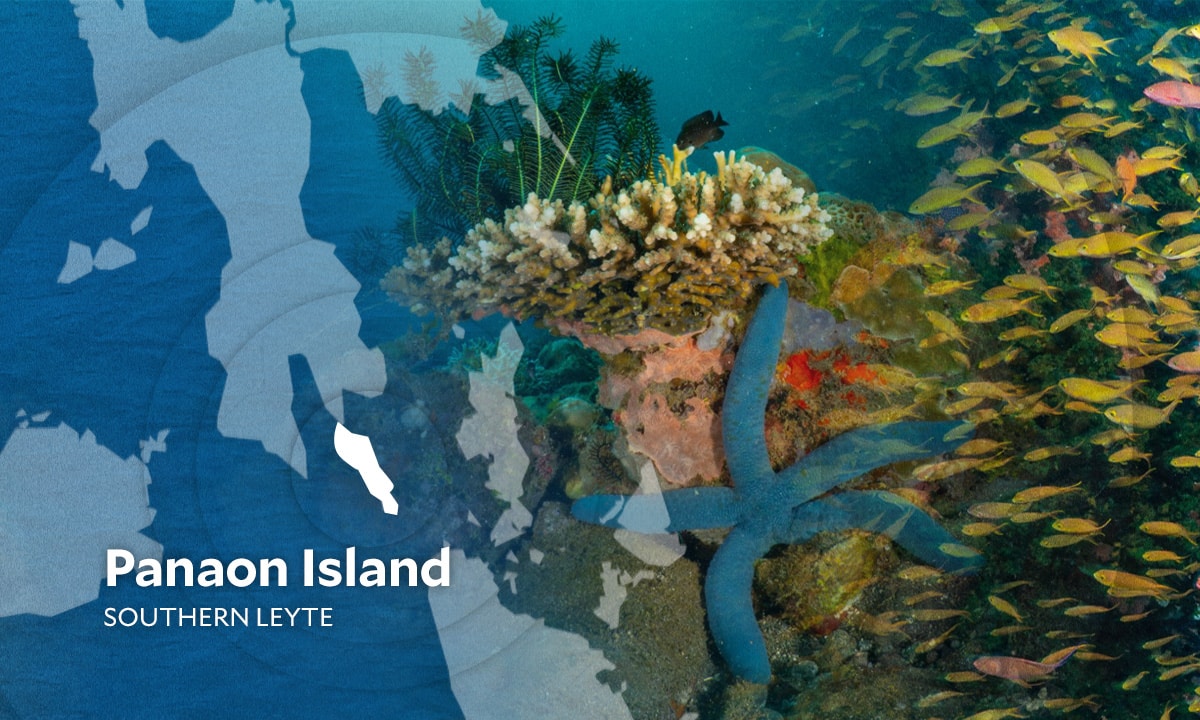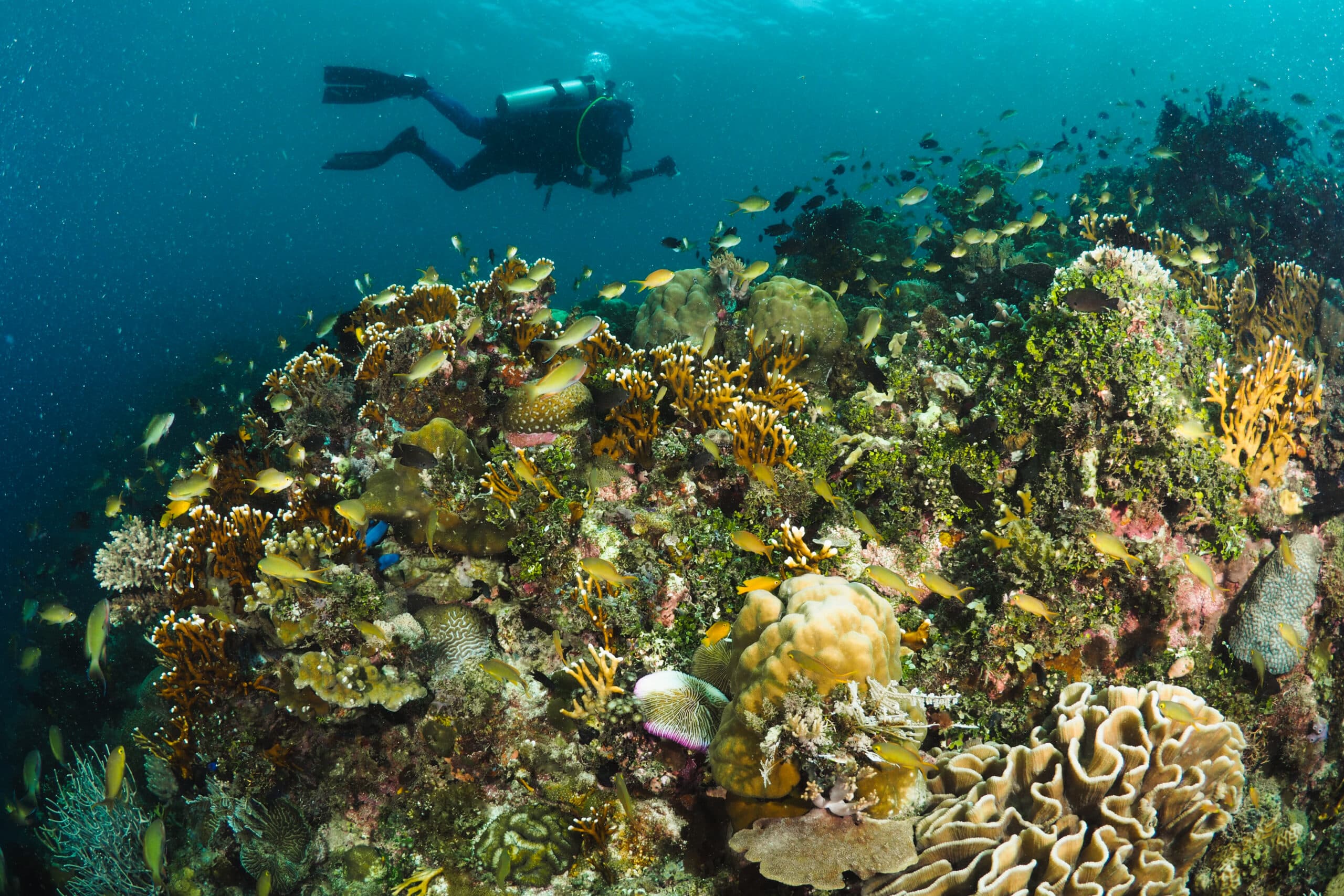Senate OK of protected seascape around Panaon Island urged

COMPOSITE IMAGE FROM PHOTOS CONTRIBUTED BY DANNY OCAMPO, OCEANA
MANILA, Philippines—The Department of Tourism (DOT), National Economic and Development Authority (NEDA), fisherfolk, and marine conservation advocates are urging the Senate to fast-track approval of a bill that would designate Panaon Island in Southern Leyte as a protected seascape.
As the Senate prepares to deliberate on December 3 on the proposal to designate Panaon Island as a protected seascape — alongside 10 other measures for protected area status — advocates are calling for urgent and decisive action to safeguard its unique marine ecosystems.
A broad coalition of community leaders, regional officials, environmental advocates, and concerned citizens is rallying behind a crucial legislative effort to designate Panaon Island in Southern Leyte as a protected area under the Expanded National Integrated Protected Areas System (ENIPAS) Act, Republic Act 11038.
With threats such as illegal fishing, crown-of-thorns starfish infestations, pollution, and the worsening impacts of climate change endangering the island’s biodiversity, supporters stress that swift Senate approval is essential.
Lawyer Jam Colas-Villaber, secretary of the Region 8 Regional Development Council and assistant regional director of the National Economic Development Authority, emphasized that declaring Panaon Island as a protected seascape through legislation is a vital step toward preserving and sustainably managing the island’s unique marine biodiversity for future generations.
Article continues after this advertisement“We fully support the bill to protectPanaon Island, and we are optimistic this legislation will contribute to improving our tourism efforts,” said DOT Assistant Regional Director Boris Pascubillo.
Article continues after this advertisement“Not only is it a part of Sogod Bay, it’s also a true gem among the Philippines’ dive spots and deserves much attention and protection. Protecting this area is essential to preserve its natural beauty and in sustaining local livelihood,” Pascubillo added.
Protecting livelihood and culture
Panaon Island, nestled between Visayas and Mindanao, is renowned for its thriving coral reefs, which boast up to 60 percent live coral cover — three times the national average of 20 percent. These reefs, part of the globally significant “Coral Triangle,” support diverse marine life, including whale sharks and sea turtles.
The island is also home to thriving mangrove forests, which not only provide vital habitat and a favored stopover for the endangered Philippine duck (Anas luzonica) but also play a crucial role in protecting the coastline from storm surges.
However, Oceana, a global organization dedicated to ocean conservation, warned that these ecosystems face severe threats from the impacts of climate change and various human-induced pressures.
These challenges not only endanger the health of the marine habitats and biodiversity but also jeopardize the livelihood of the island’s fishing-dependent communities.
Local leaders and communities recognize the direct link between conservation and their economic well-being. In Pintuyan town, for instance, ecotourism centered around sustainable whale-shark interactions has become a vital source of income, complementing traditional fishing practices.
“Malaking tulong sa amin ang nakukuhang income sa whale shark watching,” said Raul Cordova, village chief of Son-ok in Pintuyan town.
(The income we earn from whale shark watching is a big help to us.)
“Itong mga whale shark at corals, parte ng pinangangalagaan namin dahil pinagkakakitaan namin ito — maliban pa sa pangingisda. Dito talaga kami umaasa,” he adds.
(These whale sharks and corals are part of what we protect because they provide us with a source of livelihood — aside from fishing. This is what we truly rely on.)

Coral reefs on Panaon Island are rich with fish that attract tourists and support the food security and livelihood of local communities. Photo contributed by Danny Ocampo, Oceana.
Marine biodiversity experts believe that declaring the 60,000 hectares of waters surrounding Panaon Island as a protected seascape is vital to preserve its exceptional ecosystems and secure the livelihood of local communities that depend on its abundant marine resources.
“The immediate approval of this bill is crucial for the sustainable management and long-term protection of Panaon Island,” said Gloria Estenzo Ramos, Oceana vice president.
“The local fisherfolk are well-versed in what they need to protect their own already. This legislation will empower them through local governance, stronger law enforcement, and ensure that national agencies and local governments can work together to be responsible stewards of these vital resources,” Ramos added.
In November 2023, the House of Representatives approved the bill to protect Panaon Island on the third and final reading.
READ: House OKs bill declaring Panaon Island a protected area
Supported by Senator Cynthia Villar — head of the Committee on Environment and Natural Resources — and national conservation leaders, the bill’s passage in the Senate would represent a significant milestone in advancing the Philippines’ commitment to the global “30×30” conservation target: protecting 30 percent of the country’s terrestrial and marine areas by 2030.
The Department of Environment and Natural Resources (DENR) has prioritized Panaon Island as a critical area for conservation. The island’s coral reefs are part of the global “50 Reefs” initiative, underscoring their resilience and potential for contributing to climate change mitigation.
Threats faced
Yvette Lee, an award-winning photographer who had dived all over Asia, previously noted that corals in Panaon are in mint condition, which signified that it has not yet been heavily impacted by human activity.
“Panaon is a gem. It’s a 20-carat emerald,” said Lee, who was part of the Panaon expedition’s documentary team. “Only in rarely dived places can you see sea fans growing out of the sandy floor,” Lee said.
READ: Hope grows for protection of Panaon Island
“Usually, you see them on walls or steep slopes. In Panaon, you see them a lot, which is an indication that it is a relatively untouched place where pristine reefs thrive,” Lee continued.
Panaon has more than 250 species of hard coral and soft coral.
“In one spot, you may see delicate sea fans, swathed in varying shades of yellow, orange, and pink. In another, you may come across table corals stretching five meters (16 feet) across, their umbrellas sheltering marine life in need of some shade,” Oceana said.
“There are fungi-like foliose corals, magenta-colored soft corals, and massive branching corals resembling the roots of an ancient tree,” it added.
There are also 18 important species of flora and fauna found in the waters surrounding the island—all of which are on the International Union for Conservation of Nature’s (IUCN) list of threatened, endangered, and critically endangered species that include whale sharks, blue whales, hawksbill turtle, and green sea turtle.
Unfortunately, a team from Oceana that went on a 22-day expedition to Panaon in 2020 also discovered plastic pollution—plastics wrapped around corals. These are considered very dangerous, especially for sea turtles—a vulnerable species–which could ingest plastics or get entangled with them.
“Because sea turtles are unable to easily regurgitate foreign objects, swallowing a piece of plastic can be a slow death sentence if it prevents a turtle from eating or digesting food,” Oceana said.
“Though marine pollution in Panaon is less prevalent than in other parts of the Philippines, it serves as a stark reminder that even seemingly pristine and remote habitats cannot escape the scourge of plastics,” it added.
Aside from marine pollution, Panaon faces other threats to its coral system.
“First, the island is an up-and-coming tourist destination and visitors could place undue strain on reefs that are already vulnerable to warming waters,” Oceana explained.
“Second, illegal and destructive fishing are widespread problems in the Philippines. Some fishers use dynamite and cyanide to catch fish. Others drag bottom trawls that bulldoze the seafloor. Corals, many of which are fragile, can take decades or longer to recover from destructive fishing.”
Oceana emphasized that granting Panaon Island the legal protections it urgently needs would enable the Philippine Senate to secure a resilient future for fisheries, safeguard biodiversity, and support the communities whose livelihoods depend on a healthy and thriving marine environment.